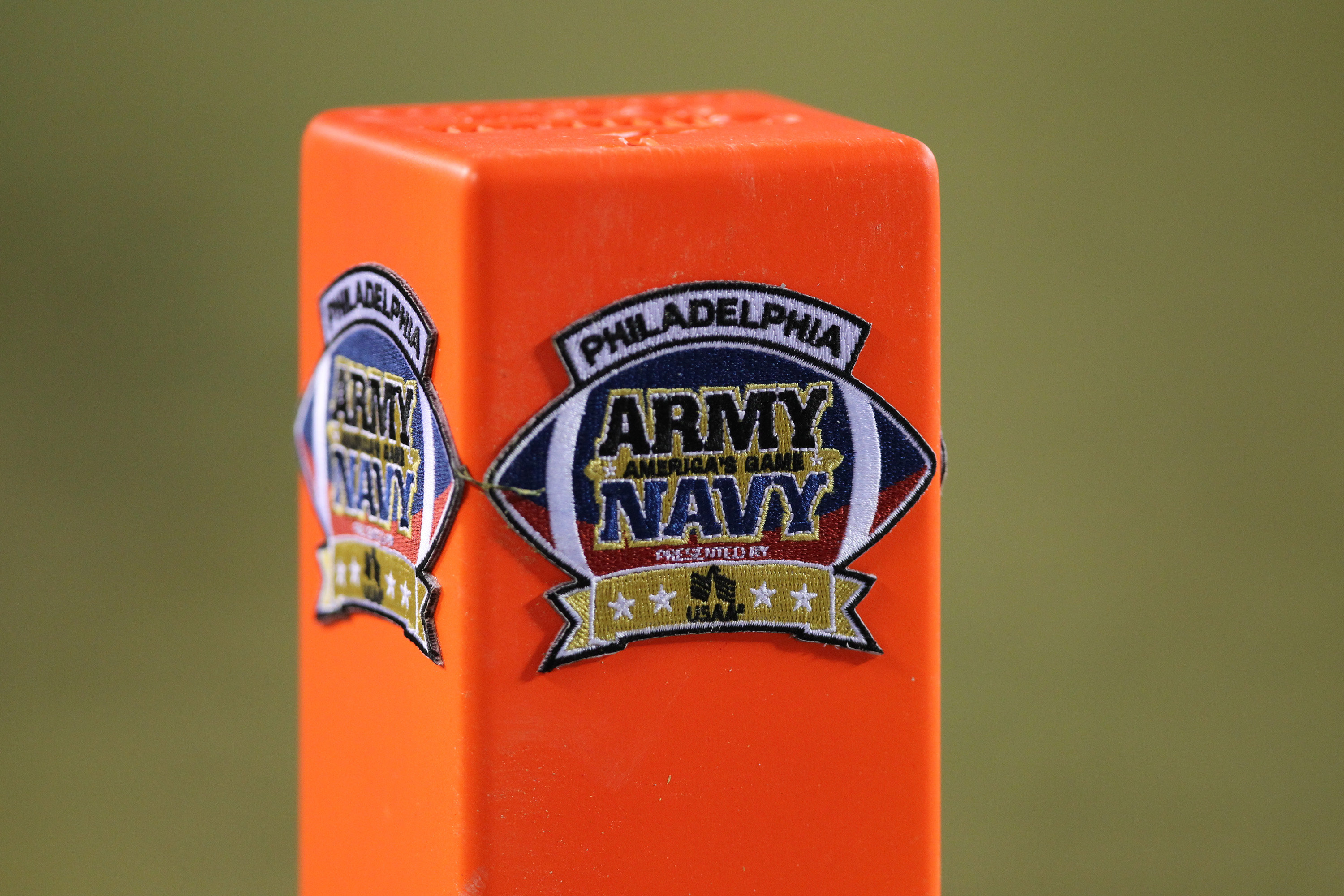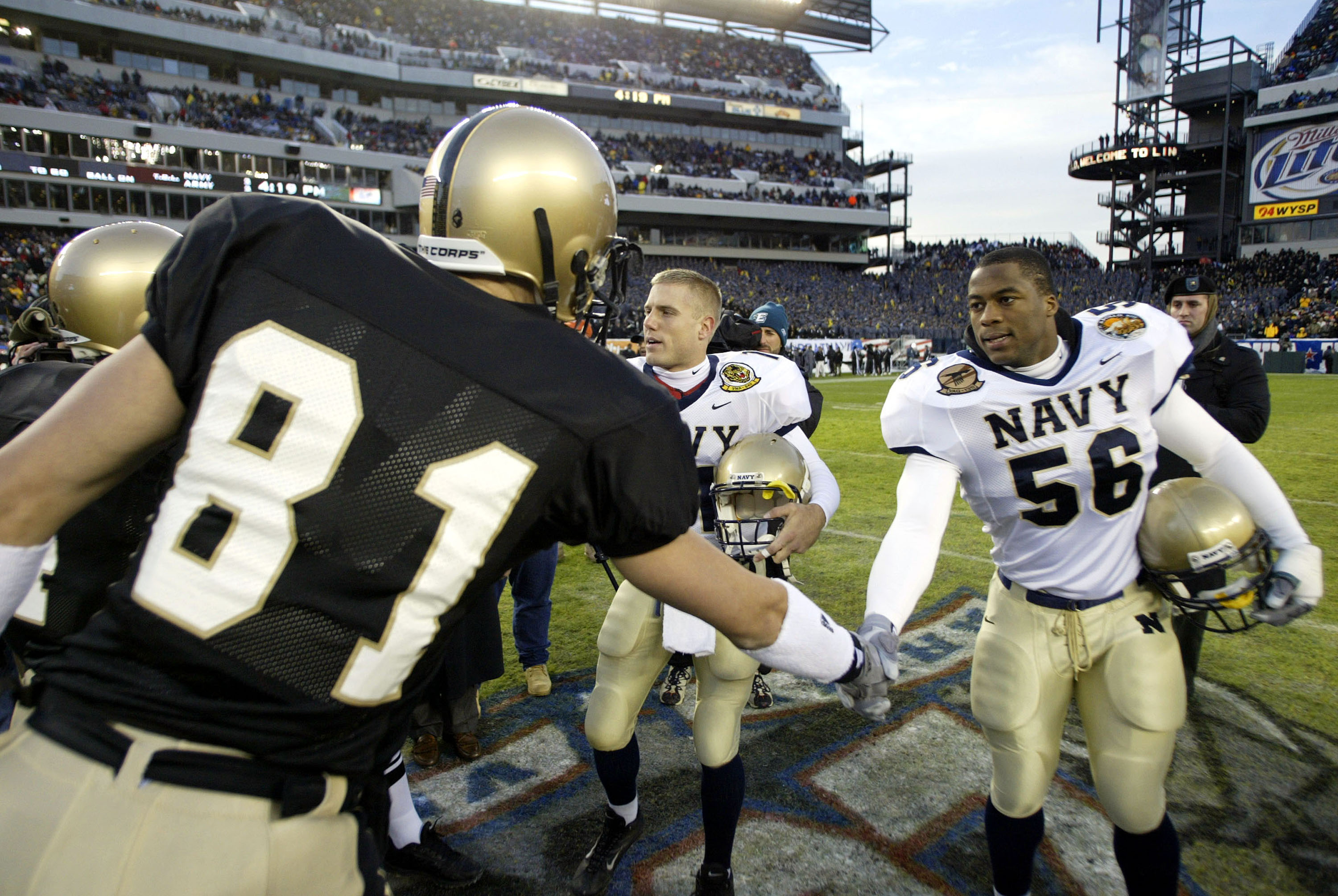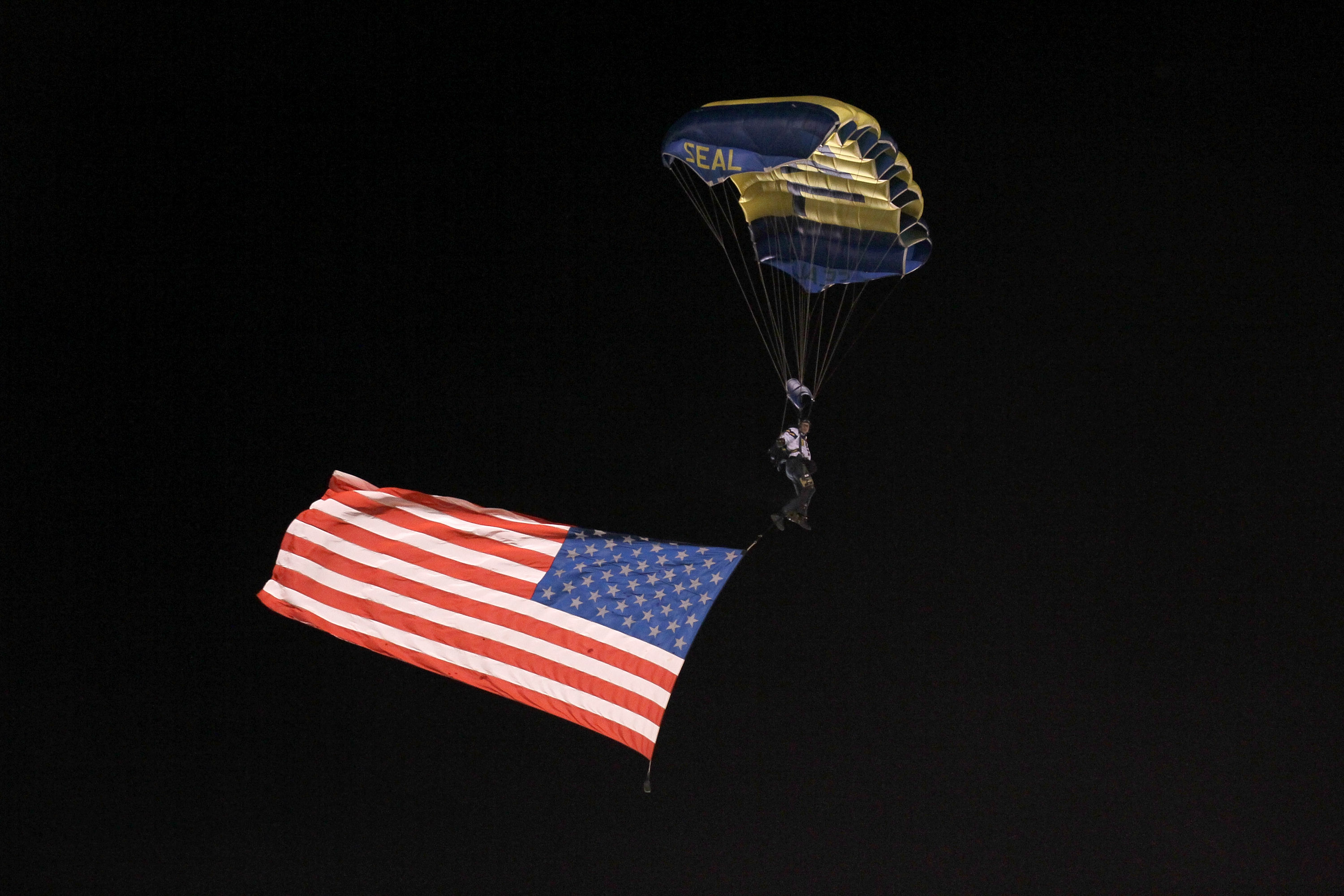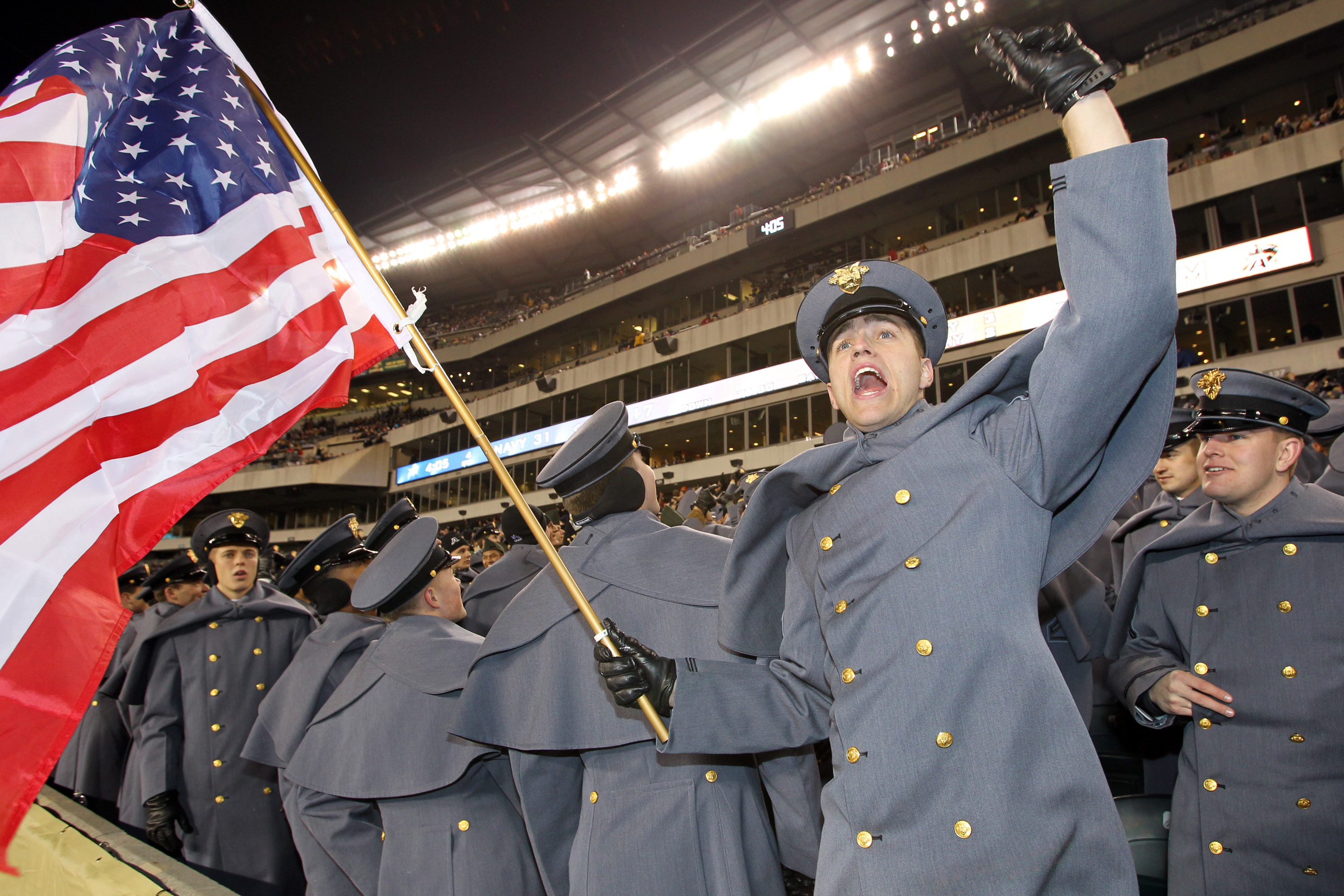Army/Navy: Why The Service Academy Rivalry Is The Nation's Best
Army/Navy: Why The Service Academy Rivalry Is The Nation's Best

Michigan-Ohio State. Auburn-Alabama. USC-Notre Dame. Texas-Oklahoma.
Ask any college football fan to name some of the greatest rivalries, and no doubt these teams will come up as answers.
However, there is no rivalry that even comes close to comparing to Army-Navy. No game in the college football landscape brings to the table what the Army-Navy game does, no matter what anyone argues.
Dubbed, "America's Game," Army-Navy matches two service academies that will produce a Who's Who among the next generation of great military leaders.
The next seven slides will discuss in detail why the Army-Navy matchup is "Second to None" among college football games. No rivalry in college football, or in fact, all of sports, comes even close to representing the same that Army-Navy does.
7. Representing A Unit

When you take a closer look at the jerseys of each team, insignias from active-duty and reserve units are seen.
This has shown that no soldier, sailor or Marine is forgotten wherever they are serving in the world. In a way, it's like a part of each unit is with each player on the field.
As a former member of the Army, when I see the unit patch of the 2nd Infantry Division, it evokes pride in my service overseas. Undoubtedly, many current and former military members feel that same sense of pride when they see their unit insignia.
6. Entrance Requirements

Many of the country's brightest football prospects will never consider Army nor Navy. Due to the high entrance requirements, height and weight restrictions, and required service after graduation deter many players from entering each academy.
Academic standards at each school are on par with many Ivy League-type schools. With the strict academic standards, plus everything that comes with being a military cadet, time is not a plentiful commodity in a cadet or midshipman's life on campus.
5. Marching In

The marching in of the Corps of Cadets and Midshipmen evokes a sense of pride for all, past and present.
For those who have marched into the stadium before the game, passion and pride for service are felt by all in that moment, whether on the field marching or in the stands.
4. No NFL Here

With the exception of a few in the past, most of the players in this game will not go onto the fame and riches of the NFL. After graduation, each academy requires a certain amount of service to the Army, Navy or Marine Corps.
In fact, many of the seniors will find themselves serving overseas by the time the next year's game comes around. In fact, throughout history, some of the players have even lost their life in combat, with the most recent coming in 2004 when Navy's J.P. Blecksmith was remembered after losing his life in Iraq.
One year before, Blecksmith found himself on the field in the Army-Navy matchup.
There have been a few that have found NFL glory, however, with the most famous being Roger Staubach, who played in the game for Navy in 1965. Staubach went on to have a Hall of Fame career with the Dallas Cowboys.
3. Alma Mater

At the end of the game, the best tradition of all is a sight to see.
The losing team is the first to go as they stand in front of their fans and sing their alma mater, with the winning team standing behind them in support.
At the conclusion of the song, the winning team runs over to their fans and does the same, with the losing team standing behind them in support. It is done as a sign of mutual respect.
In what other rivalry does this happen?
2. The History

With the first game being played in 1890, Army and Navy have met 111 times on the gridiron with Navy holding a 55-49-7 record over Army.
The game used to be played on the Saturday after Thanksgiving, however, the game is now played on the second Saturday of December, making it the last regular-season college football game.
Since the inception of the game, the teams have not met 10 times. The first five were from 1894-1898 when both schools were prohibited from playing road games, only being allowed to play home games after a feud between two high-ranking officers from each academy.
Those five years allowed for tensions to diffuse between the academies.
In 1899, Philadelphia was chosen as a neutral location for the game, as has hosted Army-Navy a total of 81 times.
1. The Most Important Aspect Of All

At the end of the day, these cadets and midshipmen aren't bound for fame and glory. Instead, for most, the battlefield will become one of their next scenes.
These men don't go on to play in the NFL, although there are some who have. For the seniors, the game symbolizes one final battle on the gridiron (with the exception of a bowl game). After that, their battles will be in leading men and women they are put in charge of.
Countless have played in the game throughout the years. By the next year's game, they found themselves in a foreign land, whether it be in Europe, Korea, Vietnam, Afghanistan or Iraq.
This game is about the strength of the human spirit. The will to give your all to your team for one goal - "Beat Army" or "Beat Navy."
This is "America's Game." This is Army-Navy.
Finally, What Army-Navy Means to Me

Army-Navy has meant a lot to me over the years. No, I never went to West Point nor Annapolis. In fact, I was enlisted for my eight years in the service.
My first taste of the rivalry came in 2001, while in technical school at Fort Meade, Md., just miles down the road where a few of the hijackers stayed the night before boarding planes on Sept. 11.
In the morning, we had our own Army-Navy (flag) football game, giving many of us a taste of the rivalry. Just like in the real football game, there was a sense of pride in representing the Army on our base against Navy and Marine Corps personnel. We wanted to beat them badly, just like they wanted to beat us.
While overseas, seeing my unit's patch on the jersey of a player, swelled up pride inside of me. For my family, it sparked warm memories of me, seeing that patch, knowing that I was wearing it on my sleeve every day as I served our great nation.
Since then, Army-Navy is the one game that is a must-see. I've skipped weddings, family gatherings and work to watch the game. It is the one game a year where I must watch.
To see the patriotism, passion and pride sends chills up and down my spine. And, I sit there with the rest of my Army brethren saying, "Beat Navy!"
Sure, Navy has a long winning streak, but that doesn't matter. "America's Game" is about more than football. It's about our country and the great things about it.
There are many men and women who put their lives on the line daily protecting freedoms of many around the world.
If that isn't what America is all about, then I don't know what is.
Any thoughts? Please share.
